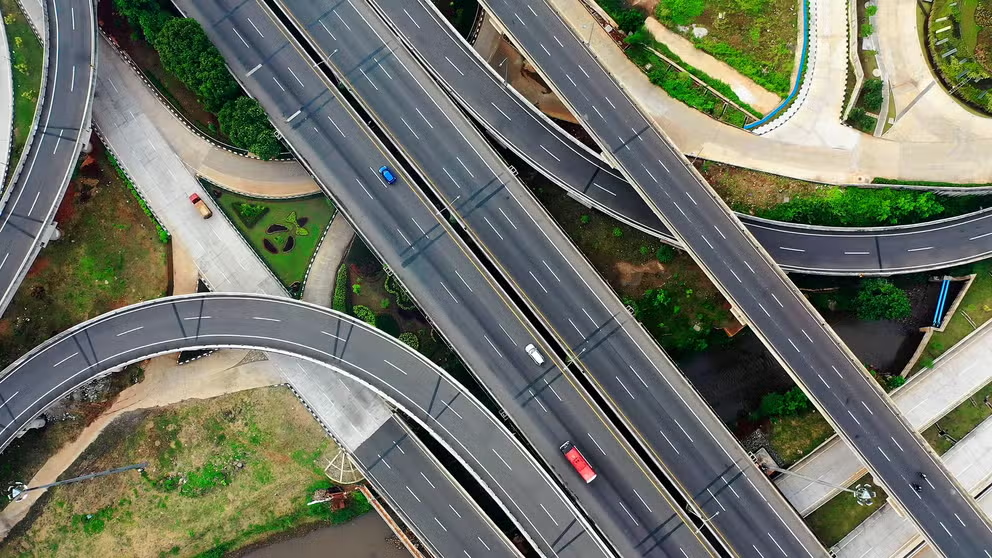Road trips and revolutions: How the interstate highways transformed America
The interstate highway system helped usher in an era of a booming auto industry, the rise of suburbs and new economies and a greater connectedness between Americans.
How interstate highways shaped America
The interstate highway system tells a story about a nation whose evolution both drove and was driven by something as seemingly simple as pavement.
Like seams on a quilt, they run across the country, with every mile serving as a stitch in the needlework.
As interstate highways sew together pieces of geography, they help connect cultures and economies scattered from sea to shining sea.
Each blacktop mile of these connections can tell countless stories about road trips, work commutes and livelihoods spent behind the wheel.
But even more so, they can also tell a story about a nation whose evolution both drove and was driven by something as seemingly simple as pavement.
A budding collaboration
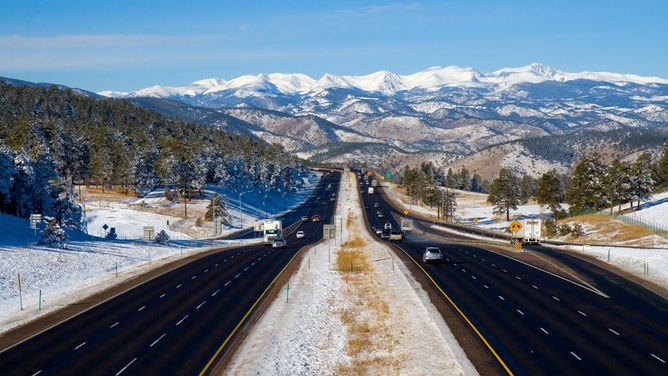
Snow covers the landscape surrounding I-75 facing west toward the Rocky Mountains.
(Tony Savino / Corbis / Getty Images)
Long before most of America’s roads were paved smooth and crisply lined in white and yellow, they looked very different.
3 EASY STEPS TO SAVE MONEY ON YOUR PERFECT VACATION
According to the Federal Highway Administration, many roads in the 19th and early 20th centuries were unpaved and often became muddy in the rain. Improvements — or the lack thereof — were left at the discretion of state and local officials.
"There was no national system," said Bruce Seely, retired historian of technology, science and engineering at Michigan Technological University. The closest national system at the time was the system of post roads used for delivering mail.
Then in 1916, Congress passed what is considered the foundation for a national system. Called the Federal Aid Road Act, it created a partnership between federal and state governments to improve the conditions of post roads in rural areas.
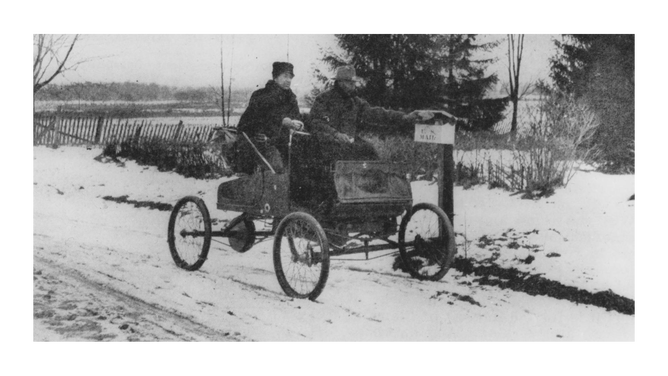
A postman, or Rural Free Delivery (RFD) carrier, tries out a car on his snowy route. Because of the conditions of rural post roads, most postmen used horses, wagons, and sleds to deliver mail on rural roads. c. 1905
(National Postal Museum, Curatorial Photographic Collection)
According to Seely, in the late 1930s, as the nation was in the throes of the Great Depression, larger efforts for road improvements and the creation of superhighways were made.
One of which was the Pennsylvania Turnpike, a toll road that became particularly popular with truckers and would later serve as the model for the interstate system.
"The idea begins to emerge in the Bureau of Public Roads at the federal level that we need a better system to address intercity travel," Seely said. "And so, the planning for the interstate would begin about that time."
The flood
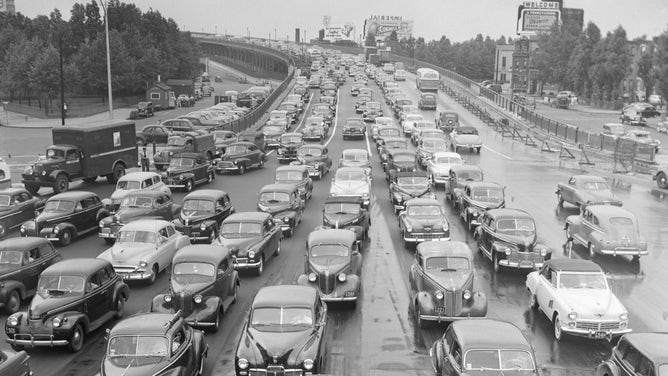
Vehicles at a standstill on a congested road.
(H. Armstrong Roberts / Retrofile / Getty Images)
Some of the biggest pushes for an interstate road system came about after World War II.
According to Seely, a combination of factors, such as veterans returning home from the war and having money to spend, along with the Detroit auto industry pivoting from making tanks and jeeps to making cars, helped pave the way for change.
TRAVELING THIS WINTER? HERE'S WHAT TO KEEP IN YOUR CAR IN CASE YOU GET STUCK
"All of a sudden, there's an enormous flood of traffic with the end of the war," said Seely.
This "flood" on the roads, which were generally in better condition by this point, created vast amounts of congestion around active areas, such as strip malls, stop signs and stoplights.
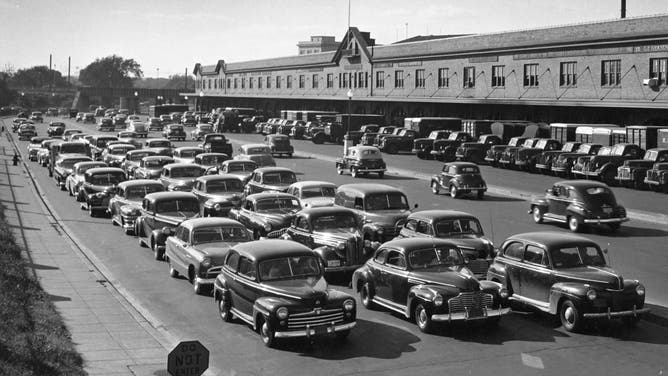
Traffic on Maine Avenue in Washington D.C. in 1949.
(US State Department / PhotoQuest / Getty Images)
"This was one of the reasons behind the push to fund the interstate program, especially around cities," said Seely. "You just didn't have enough road mileage for the amazing volume of traffic that came out of World War II."
This volume, combined with pre-WWII ideas to create interstate roads, helped further this initiative to upgrade the American road system both on the state and federal levels.
The father of the interstate system
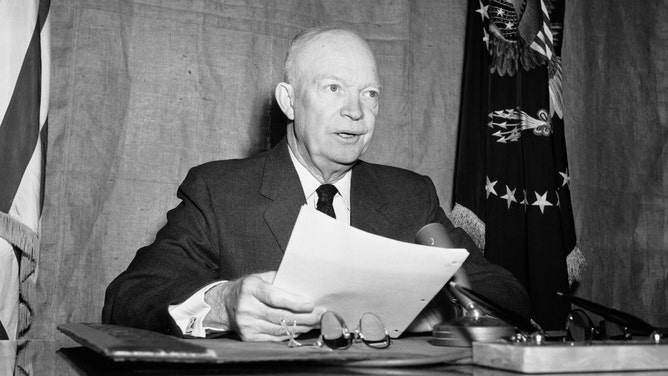
President Eisenhower giving a televised address in 1956.
(Bettmann / Getty Images)
The creation of a national road system was based on decades of learnings and legislation.
"The interstate style begins to emerge from research between the states and the federal government about what these roads should look like," Seely said.
HOW TO WATCH FOX WEATHER ON TV
According to Seely, this research looked at models, such as the Pennsylvania Turnpike, to develop a standard design. The design included separated lanes, with two lanes in each direction to allow higher speeds, and making sure businesses were not placed right by the road in order to prevent congestion.
This push for the interstate highway system gained a powerful advocate in 1953, when newly-elected President Dwight Eisenhower made revitalizing the Nation's highways one of the goals of his first term, according to the Federal Highway Administration.
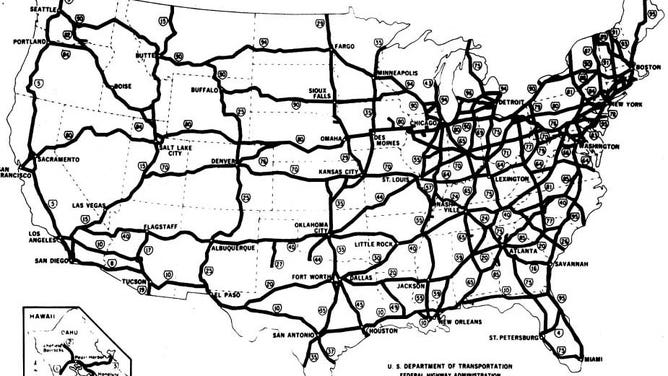
The final map of the proposed interstates under President Eisenhower.
(U.S. Department of Transportation)
On June 29, 1956, President Eisenhower signed the Federal-Aid Highway Act of 1956. Also known as the National Interstate and Defense Highways Act, the law standardized the design of roadways and cloverleaf entrances and exits and authorized the construction of 41,000 miles of interstate.
The law also created a Highway Trust Fund that drew on taxes to pay for the roads and increased the federal government’s financial contribution to highway construction from 50 percent to 90 percent.
HOW TO PREPARE YOUR VEHICLE FOR COLD WEATHER
According to the U.S. Senate, the Federal-Aid Highway Act of 1956 turned a jumble of unconnected local roads into a national transportation network that stretched from coast to coast.
"It basically transforms the nature of transportation in the country," said Seely.
A changing America
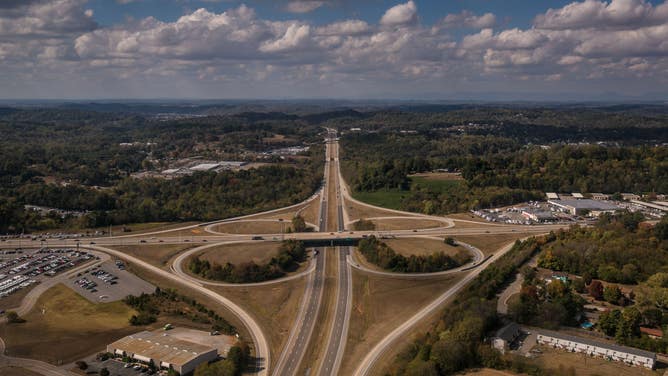
A cloverleaf interchange on Interstate 140 and highway 129 in Knoxville, TN.
(George Rose / Getty Images)
Such a transformation had a ripple effect on the U.S.
"If you look at the country from the air, the most crucial difference between then and now is this appearance component," Seely said. "You now have, in effect, a grid structure imposed by the highways and then cities, where you have circled the roads and you've built up a very different kind of economy than you ever had before."
"Where those roads intersect have become significant economic centers for the United States," he added.
According to Seely, the interstates also helped bring about the emergence of suburban homes with garages.
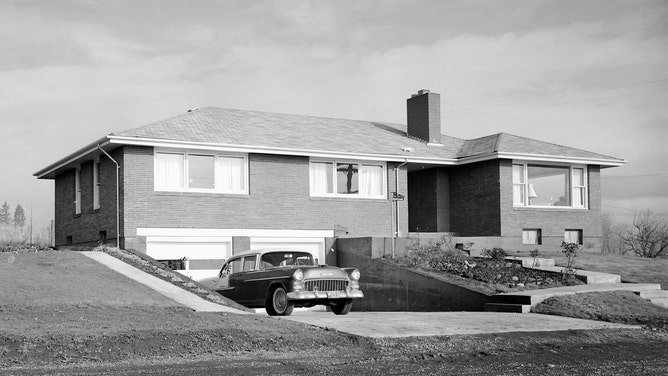
A Chevrolet automobile in the driveway of a new suburban home in Washington state.
(Kirn Vintage Stock / Corbis / Getty Images)
While suburbs were not a new concept at the time, their location had moved further out from the cities as the result of people being able to drive around more easily by using interstates.
Additionally, Americans gained greater access to products and types of foods from across the country, as they became more easily and more quickly transported.
YOU WERE JUST INVOLVED IN A WEATHER-RELATED CRASH - NOW WHAT?
"The idea that you can have tomatoes year-round, that you can have lettuce year-round in this country, is now a product of the interstate system," Seely said. "Trucks are what's delivering it, and interstate highways are the facilitating mechanism."
The road ahead
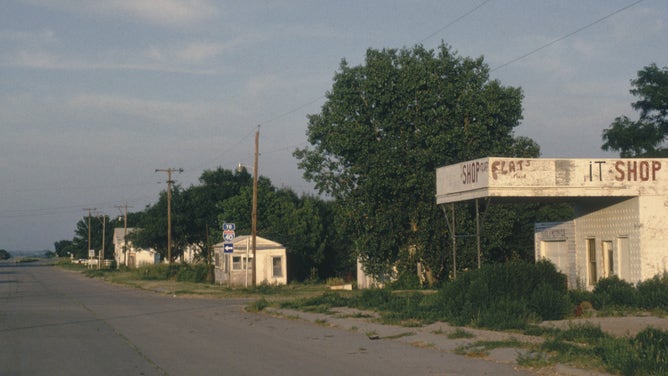
The empty main street of Texola, OK, one of the stops along Route 66 in 1989. The town was bypassed by the new Interstate 40 and suffered from the loss of through traffic.
(Richard Jordan / Hulton Archive / Getty Images)
As interstates facilitated the flow of products and people, they also facilitated a decrease in regional variation in the country.
"It showed in lots of different ways. It showed in clothing, as well as in housing styles," said Seely. "We've now become much more homogeneous."
"I grew up as a kid in Chicago, in Pittsburgh, and we didn't see Mexican restaurants. Now what town or city doesn't have a Mexican restaurant? Those kinds of things that represent both diversity, but also the removal of some of the local variations that were part of the excitement about traveling are interesting to see," Seely added.
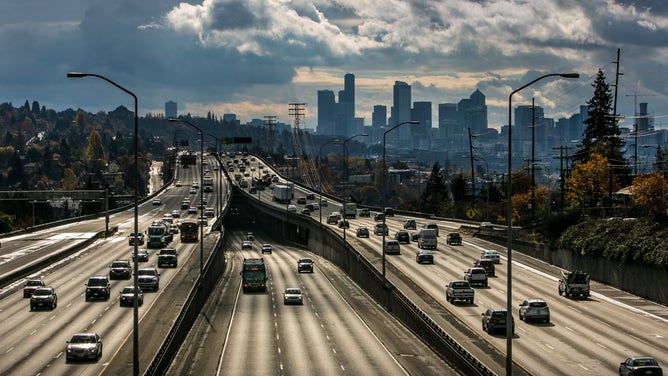
The downtown Seattle skyline is viewed from a bridge over Interstate 5.
(George Rose / Getty Images)
According to Seely, many technological systems bring about a combination of advantages and opportunities, along with costs and challenges.
"For some people, these changes were not necessarily what they were looking for, but for a great many people, they were embraced and quite eager to take advantage of the transportation that the interstate system offered."
With the country connected like never before, its future transformations lie on the road ahead.
